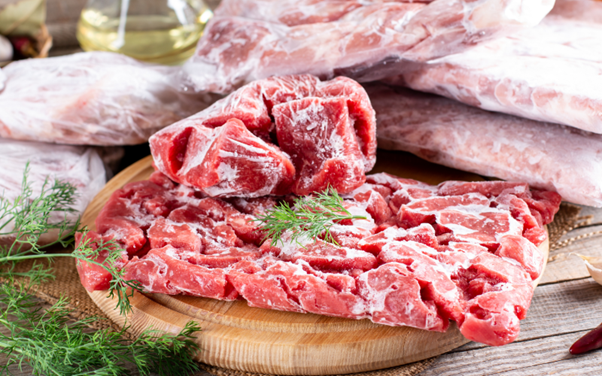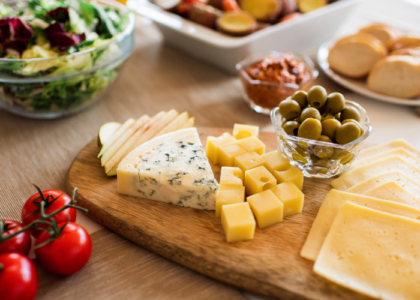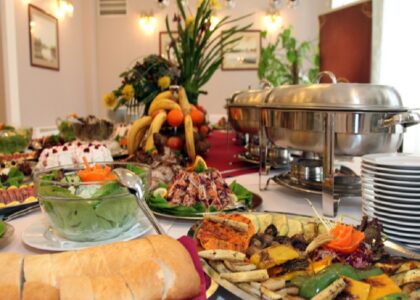Frozen pork is a versatile and popular choice for many households and businesses in Singapore, offering convenience and longevity when stored and prepared correctly. However, ensuring that frozen pork maintains its quality and safety requires careful attention to storage and preparation methods. This article will explore the proper ways to store and prepare frozen pork, focusing on practical tips and best practices.
1. Proper Storage Techniques for Frozen Pork
Storing frozen pork correctly is crucial to preserving its freshness and quality. Whether you’re dealing with a small batch for personal use or managing a large inventory as a frozen meat supplier in Singapore, the following guidelines will help ensure pork stays in optimal condition.
Temperature Control
The most important factor in storing frozen pork is maintaining a consistent temperature of -18°C or lower. This temperature halts the growth of bacteria and keeps the meat safe for consumption over an extended period. For those in wholesale meat in Singapore, it’s essential to monitor your freezers regularly to ensure they are functioning correctly and maintaining the required temperature.
Packaging
Proper packaging is another key element in preserving the quality of frozen pork. Airtight packaging prevents freezer burn, which can affect the taste and texture of the meat. Vacuum-sealed bags are ideal for this purpose, as they remove air and create a tight seal around the pork. If vacuum sealing is not an option, consider using heavy-duty freezer bags or wrapping the pork tightly in aluminium foil before placing it in a resealable bag.
Organisation and Labelling
For businesses dealing with large quantities of frozen pork in Singapore, such as a frozen meat supplier, organisation is crucial. Properly label each package with the date of freezing and the type of cut, such as pork collar or fresh pork. This practice helps maintain an effective rotation system, ensuring that older stock is used first and reducing the risk of waste.
2. Thawing Frozen Pork Safely
Thawing frozen pork correctly is as important as storing it properly. Incorrect thawing methods can lead to the growth of harmful bacteria, making the meat unsafe to eat. Here are some recommended thawing techniques:
Refrigerator Thawing
The safest way to thaw frozen pork is in the refrigerator. This method allows the meat to defrost gradually at a safe, consistent temperature, preventing the growth of bacteria. Depending on the size of the cut, it may take anywhere from a few hours to a full day to thaw. Planning is essential, especially for larger cuts like pork collars.
Cold Water Thawing
If you need to thaw pork more quickly, cold water thawing is an effective alternative. Place the frozen pork in a leak-proof plastic bag and submerge it in cold water. Change the water every 30 minutes to ensure it stays cold. This method is faster than refrigerator thawing but still safe when done correctly. However, it’s important to cook the pork immediately after thawing to avoid bacterial growth.
Microwave Thawing
Microwave thawing is the quickest method but should be used with caution. Microwaves can cause uneven thawing, leading to some parts of the pork cooking while others remain frozen. If you choose this method, cook the pork immediately after thawing to ensure it reaches a safe internal temperature.
3. Preparing Frozen Pork for Cooking
Once your pork is properly thawed, preparation is the next crucial step. The way you prepare frozen pork can significantly impact the flavour and texture of the final dish. Here are some preparation tips:
Marinating
Marinating thawed pork can enhance its flavour and tenderness. Depending on the cut, like pork collar, marinating for several hours or overnight can infuse the meat with delicious flavours. Be sure to refrigerate the pork while it marinates to keep it safe from bacterial growth. If you’re using a frozen meat supplier in Singapore for bulk purchases, consider preparing larger marinade quantities to season the meat in batches.
Seasoning
Seasoning is key to bringing out the natural flavours of fresh pork. Simple seasonings like salt, pepper, garlic, and herbs can be highly effective. Apply the seasoning evenly across the pork and allow it to sit for a few minutes before cooking. For those handling wholesale meat in Singapore, pre-seasoning pork before freezing can save time and ensure consistent flavour.
Cooking
When cooking thawed pork, it’s essential to ensure that it reaches an internal temperature of at least 75°C to kill any harmful bacteria. Use a meat thermometer to check the temperature at the thickest part of the cut. Different cuts, like pork collar or fresh pork, may require different cooking methods, so follow the appropriate recipe or guidelines for the best results.
Conclusion
Storing and preparing frozen pork in Singapore requires careful attention to detail, from proper storage and thawing techniques to effective preparation and cooking. By following these guidelines, you can ensure that your pork retains its quality, flavour, and safety, whether you’re a home cook or a business managing wholesale meat in Singapore.
For those looking to source high-quality frozen pork in Singapore, YSH Farms offers a range of products to meet your needs. Contact YSH Farms today to explore their offerings and ensure the best quality pork for your culinary needs.






